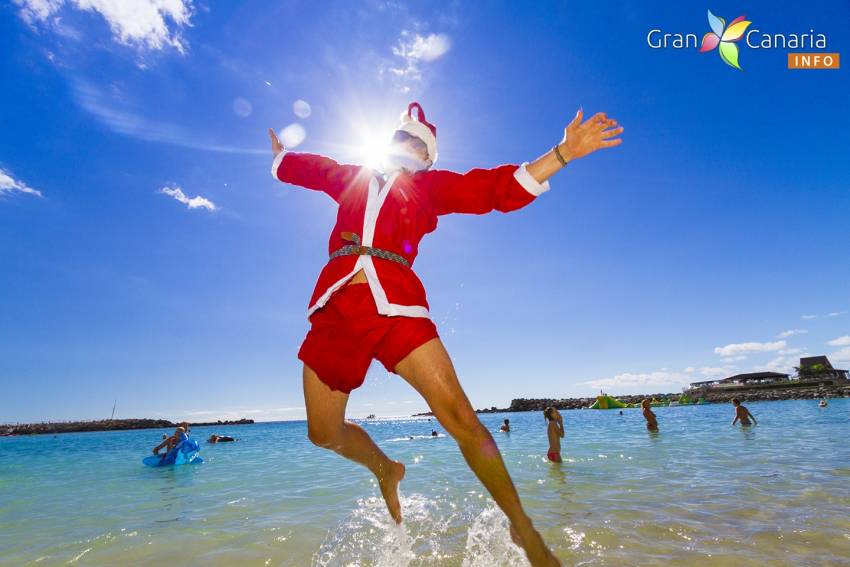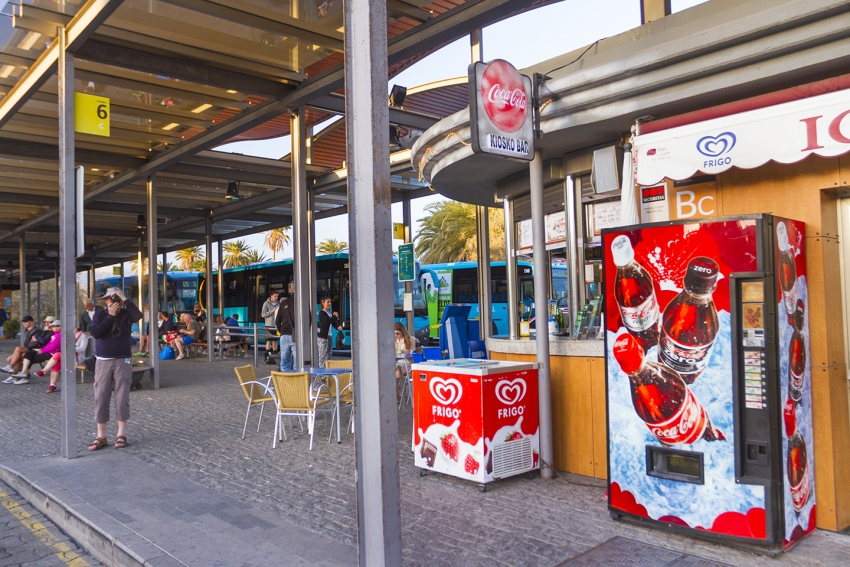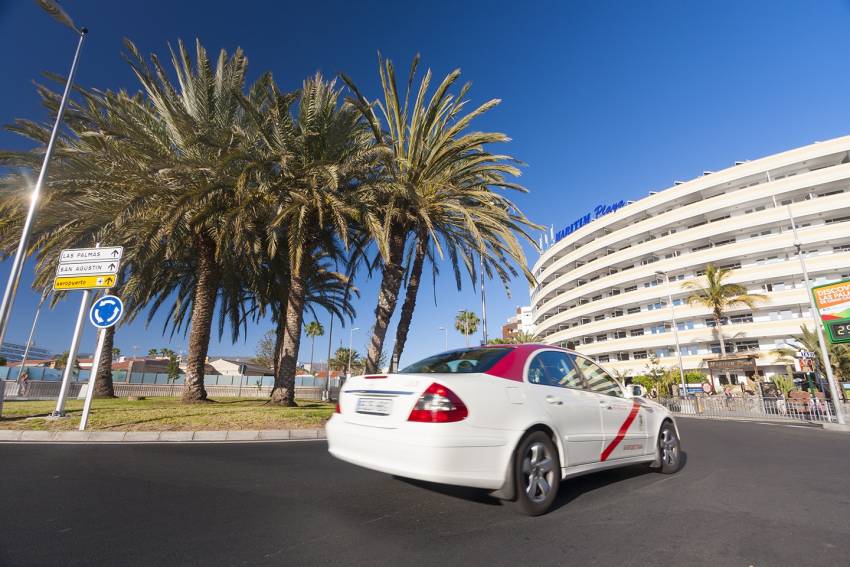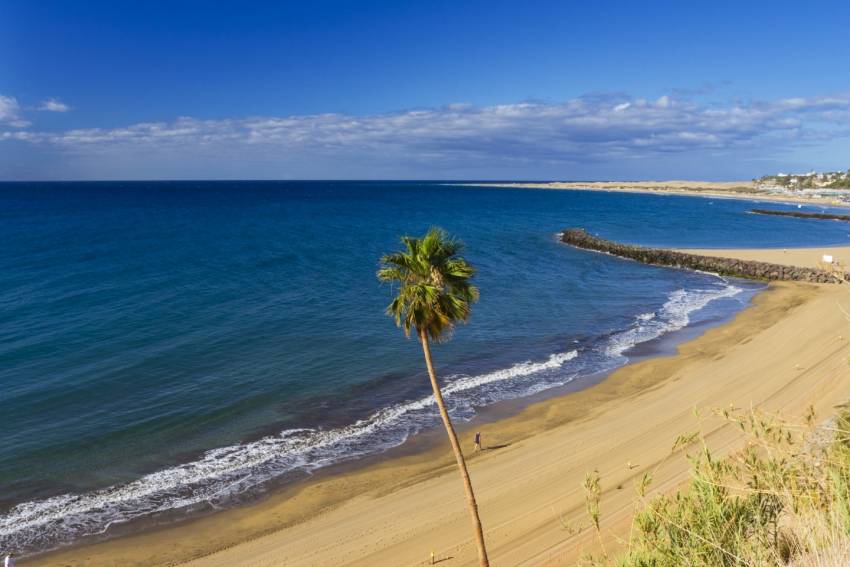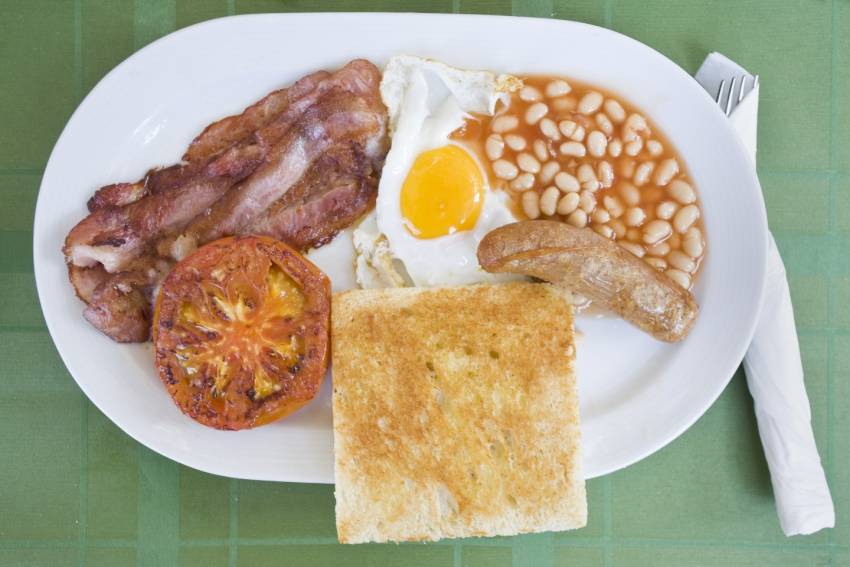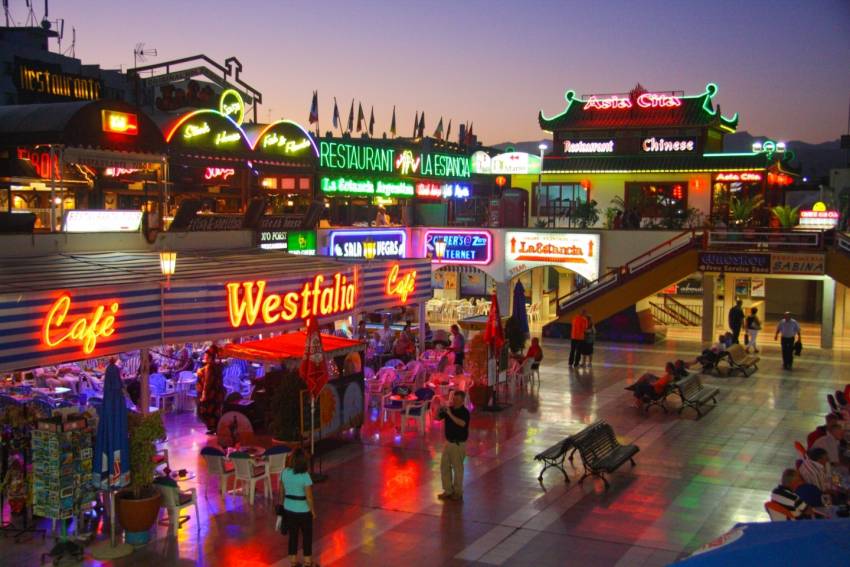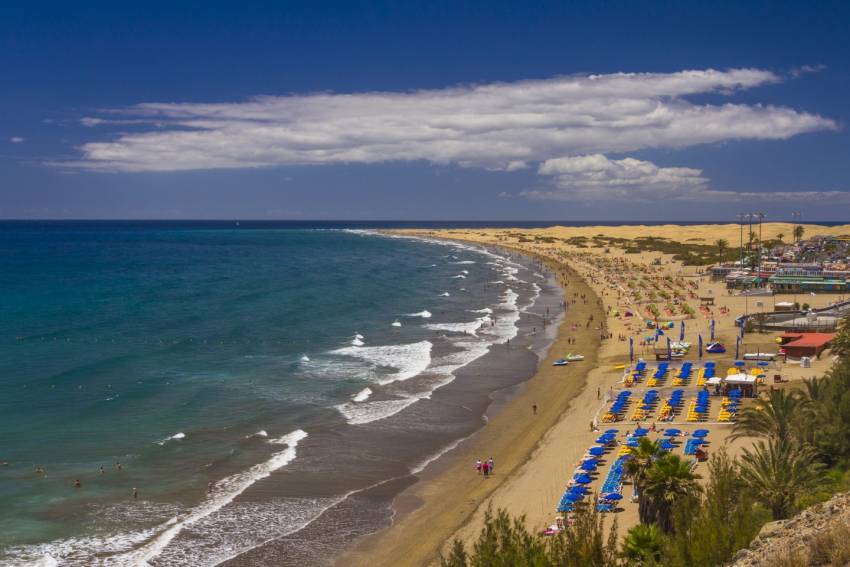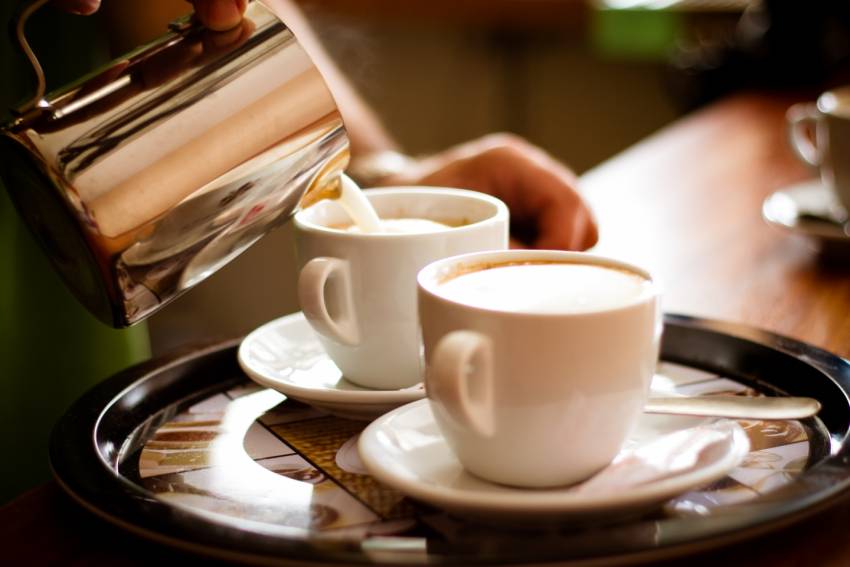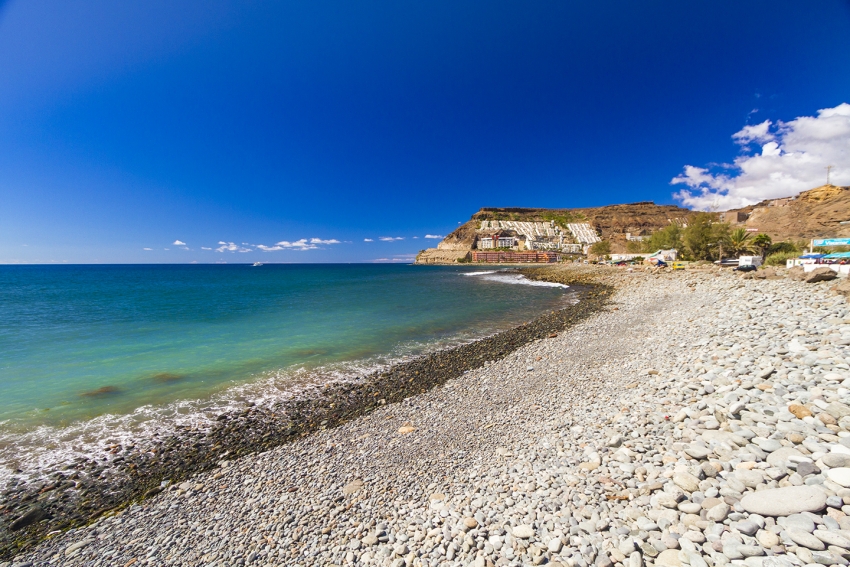Alex Bramwell
Top Ten Things to do at Christmas in Gran Canaria
Christmas in Gran Canaria tends to be a laid-back sunny affair and most people just kick back and relax. However, there's plenty of festive events in local areas and in the resorts. Here's ten great options for fun Christmas activities in Gran Canaria. Sunny Christmas!
Sunbathe in a Santa hat
There's nothing like knowing that your in the sunshine in Gran Canaria while your friends are all at home in the cold. Pop on a Santa hat and sit back in the sunshine feeling warm and smug.
Annoy everybody at home
You can't spend Christmas in Gran Canaria without snapping a selfie by the beach and making sure everybody sees it. There's big Christmas trees by most of the beaches.
Visit the world's biggest sand nativity scene
Every year sand sculptors spend weeks creating a huge nativity scene on Las Canteras beach in the capital Las Palmas. It's so big it has boardwalks running through it. Entrance is free but the sculptors appreciate any tips. The Las Palmas sand nativity scene is down at the north end of the beach right by the giant Christmas tree.
Visit the pine forest for living Christmas trees
Sometimes it's hard to get into the Chtistmas state of mind when the sun is shining and it's boiling hot. The solution in Gran Canaria is to drive up to the highlands and walk through the pine forests. You should get a few cool blasts of air and even some mist to wake up the Christmas spirit.
Look for the cagón in the island's nativity scenes
Every town and shopping centre in Gran Canaria puts up a Belén or nativity scene for December and the beginning of January. They all show scenes from Jesus' life and range from basic scenes with hand made figures to huge, ornate displays with electric lights and waterfalls.
Look carefully and each one has a figure doing something that isn't mentioned in the bible. The cagón is a man doing a pooh and is hidden behind a palm tree or a house somewhere in the scene.
Christmas markets
Every town in Gran Canaria puts on a Christmas market in late December and there's food stalls and concerts in most town squares. Events start in the fortnight before Chistmas day and last until January 6. The Canarians really know how to party.
Camel ride in the dunes
In Gran Canaria it's traditionally the Three Kings on their camels that brings the presents on January 6, although Santa is more popular with the kids as they get to play with their presents for longer before school. Why not take a camel ride through the Maspalomas dunes for a Kingly expoerience. It's the perfect spot for that sunshine selfie.
Christmas dinner
You won't get turket and all the trimmings in local areas but there's plenty of choice in the resorts for all nationalities. In local areas look out for truchas: Little pastries filled with sweet potato or sweet marrow.
Skip the whole affair
Bored of the consumerism of Christmas? Book a rural house in Gran Canaria or just go to a resort and ignore the Christmas offers. You can sit on the beach and relax for a week while everybody at home is busy getting stressed with last minute present shopping.
Give something back
The local Casa Galicia charity runs an annual collection of toys and food for people on the island who struggle at Christmas. They ask for new toys and food with a long shelf life. There are drop off points in all towns and resorts, including Cardenas Real Estate offices in Arguineguin, Mogán and Puerto Rico.
Bus Travel from Maspalomas & Playa del Inglés
Gran Canaria's local bus network is excellent and gets you to anywhere on the island within a couple of hours. Playa del Inglés and Maspalomas have two departure points:
Getting from Gran Canaria Airport to Playa del Inglés
Playa del Inglés is about half an hour down the motorway from Gran Canaria airport and you can't really get lost. You can rent a car or get a bus or taxi to the resort.
The Few Dangers And Annoyances Of Playa Del Inglés Resort
Playa del Inglés has an incredibly low crime rate given the number of people and the late opening hours. Most crimes are opportunistic and can be avoided by using common sense. Serious crimes such as muggings and break-ins are extremely rare but happen here as they do everywhere.
Gran Canaria Shopping: Where To Shop in Playa del Inglés
Playa del Inglés' shopping centres aren't always the best place to go shopping as they are mostly packed withrestaurants and bars. Here's where to go to stock up on everything you need in the resort.
Eating Out In Playa del Inglés Resort
Standard resort cuisine in Gran Canaria hasn’t changed much since the 1970s. Prawn cocktails comewithout an ironic wink and the banana split rules the dessert menu. Is this because restaurateurs and chefs are stuck in a time warp? No, it’s because they serve what you guys want, and what you guys want is retro comfort food and old favourites.
The Complete Guide to Playa del Ingles' Shopping Centres
You are never more than a few minutes walk from a shopping centre in Playa del Inglés. To be honest Playa’s shopping centres are showing their age; most were designed back in the 1970s and need a lick of paint. However, they are great places to visit for the huge choice of bars, restaurants and nightclubs they offer.
Things To Do In Playa del Inglés
Most Playa del Inglés regulars sunbathe, mess about in the sea and eat and drink a lot. They go to bed late, get up late and do it all again the next day. That’s why they love Playa and come back year after year. However, as the island's biggest resort, it's also the base for most activity companies.
While we understand that the sun and fun are one of Playa’s main draws it is a shame to come to an island as beautiful as Gran Canaria and not see anything beyond the resort gates. We encourage everyone to spend at least a day out and about. Many visitors are surprised to discover that Gran Canaria is a huge island with everything from mountains and forests to hidden beaches and pretty villages.
Your reception will have a stack of leaflets full of things to do from Playa del Inglés, ranging from a parachute jump over the dunes to spa days. Just don’t expect to see any elephants during the jeep safaris. And don't go on the free excursions advertised in the leaflets left under rocks all over the resort: They are dodgy.
Gran Canaria has a great bus network and hire cars are cheap and reliable. If you want to see the island without too much effort there are dozens of coach trips that whizz you to the good bits. Just don’t book a free one as they take you to more shops than attractions.
For water sports in the resort, head down to the Annexo II shopping centre and look left.
For shopping, see our guide to Playa's shopping centres and shopping guide
For restaurants, see our guide to eating out in Playa del Inglés
Gourmet Canarian Foods You Have To Try In Gran Canaria
Gran Canaria might not seem like a foodie destination when you're tucking into an all-day breakfast in a shopping centre but plenty of delicious local produce out there. Here's a selection of the best Canarian food and drink to try and buy.
Flor de Guia Cheese
Moist and slightly bitter with a faint taste of grass and old socks: Gran Canaria’s Flor de Guía is the island’s most distinctive cheese. It’s made by traditional methods and protected by an EU Designation of Origin. It is also one of the few cheeses that uses natural vegetable rennet (extracted from thistle or cardoon flowers) rather than animal rennet. This makes it suitable for vegetarians.
Creamy flor de Guia cheese has a soft, yellow rind and is creamy and riddled with small holes. It comes in thin wheels about four inches deep.
You can buy Flor de Guia in the shops but it isn’t the real stuff. Most of the vacuum packed supermarket stuff is media flor made with a mixture or animal and vegetable rennet. It tends to be much denser and dryer than pure flor de Guia. For the genuine article head to the cheese stall at one of the island’s markets. Guia town itself has a tiny Sunday market in front of the church but nearby Galdar’s Thursday market is much bigger.
Agaete Coffee
A small bag of Gran Canaria coffee costs over 15 euros because it is only grown in the mild Agaete Valley. Known as Europe’s only coffee but a more accurate description is the most northerly coffee in the world.
Coffee was first grown in Gran Canaria in 1788 but faded away except in Agaete where the farmers grew if for their own morning cuppa. The bushes grow organically in the shade of mango, papaya and orange trees. Gran Canaria coffee beans are hand picked and sun dried and yield a delicate, fruity coffee with a hint of liquorice. Pretty tasty!
We’ve noticed a lot of coffee bushes lining banana plantations in the hills behind Galdar and Arucas so it won’t be long before the supply increases.
Temisas Olive Oil
Olive trees live a long time and don’t bear grudges. That’s just as well considering that Gran Canaria neglected its groves for over 100 years. The goats ate most of them and the small harvest was pickled ferociously in mojo.
The somebody tested the oil from the gnarled old trees and found that it is first class. Now the olivos are Gran Canaria’s latest way of turning the sunshine into gold.
Farmers are busy learning the skills that their grandparents forgot and new groves go in every year. The best Gran Canaria olive oil comes from the old trees around Temisas, the town with longest history of olive growing in the Canary Islands.
Temisas’ grizzled survivors are old varieties that have died out everywhere else in Spain. Their oil is fruity and herbal with a good peppery kick and a distinctive smell of ripe tomatoes.
Gran Canaria’s olives are harvested by hand and cold pressed. A small bottle costs about 5 euros and is best served on salads or used plain as a dip for fresh bread. It’s too good to wreck with balsamic vinegar so use a white wine vinegar instead.
Fresh Tropical Fruit
The best tropical fruit in Gran Canaria never makes the supermarkets. It’s sold in local markets and village shops. Look out for boxes of fruit that smells fantastic and has fresh green leaves still attached.
Because Gran Canaria is so high we also grow fabulous soft fruit like peaches, apricots, plums, apples and pears. Gran Canaria’s oranges are fantastic, especially the huge navel oranges that ripen during the winter.
Gran Canaria’s bananas are fantastic and taste far better than the Caribbean bananas you get in European supermarkets. It’s because they are a sweet variety and are picked ripe and never refrigerated. Bananas are available all year round.
Gran Canaria’s pineapples are delicious and are available most of the year. Only buy them if you can smell them. Papayas are harder to judge but go for the deepest colour orange or red you can find and leave them to soften for a day or two before eating.
Fresh Fish and Seafood
Most of the fresh fish sold in restaurants in Gran Canaria is farmed seabass (lubina) and gilthead bream (dorada). They are delicious and farmed locally but nothing beats fresh fish caught from the open ocean on the same day as it is cooked. Look out for fresh bonito and tuna and try local favourites like grouper (mero), cabrilla (comber), vieja (parrotfish) and medregal (amberjack).
The trick to finding the best fresh fish in Gran Canaria is to head to the little local restaurants right by the sea. The best have the fish displayed in a cabinet or on a dish by the entrance. Look for fish that is shiny with clear, glossy eyes. If the eyes are opaque or sunken you are looking at old or defrosted fish.
Squid freezes well so it doesn’t have to be fresh
Almogrote
La Gomera’s answer to pesto, almogrote is a tasty spread made from cured goat cheese, garlic, chili and olive oil. It’s traditionally served on pan bizcochado (crispy double-baked bread).
Almogrote is delicious but make sure you all eat it together as it’s full of garlic. You can buy glass pots of almogrote in most Gran Canaria supermarkets: Try and find one that is made in La Gomera rather than in Gran Canaria or Tenerife: It’s just fairer.
Guarapo
Guarapo or palm honey is another Canarian delicacy from la Gomera: It’s our equivalent of maple syrup and is fantastic on pancakes.
Guarapo is made from sap extracted by hand from La Gomera’s many palm trees. Each tree can only be tapped once every seven years: Someone climbs up each tree and cuts into the bud. The sap drains out and is boiled down into a thick, dark syrup.
La Gomera’s palm honey harvest is a fantastic and sustainable local industry that guarantees the future of the islands palm trees. Taking a bottle home helps support the Gomeran’s traditional way of life.
Supermarkets sell bottles of guarapo for about seven euros. Don’t confuse it with miel de caña or cane syrup as this is imported and nowhere near as tasty.
La Palma Salt
Sea salt from Fuencaliente in the far south of La Palma comesa from outdoor salt pans and is made by traditional methods. The best is called flor de sal which is light, fluffy scales of salt rather than big grains. It's highly rated by top chefs for its clean taste and purity. Look out for the purple packs of flor de sal flavoured with local red wine: Perfect for seasoning stews and grilled meat.
Wine
Canarian wine is so good that we've given it it's own section. While Lanzarote's whites and Tenerife's red are the easiest to find in the superamrkets it's worth tracking down Gran Canaria's white wines as they get better every year. Click here to visit our wine section.
Gran Canaria Beaches: All Change at Tauro
Tauro beach is Gran Canaria's lazy Sunday chill-out beach for people old enough to remember the resorts going up. They gather at weekends to listen to proper music and drink the island dry. With a long pebble beach, several ramshackle bars and a motely colection of decaying houses, Tauro is the anti-Amadores. For now!
Gran Canaria Info recommends:
- Default
- Title
- Date
- Random

